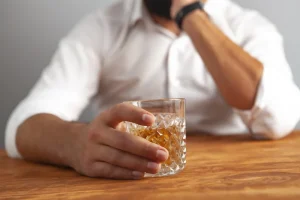
Our hopelessness and our instinctive desire to give up were spot-on, or else we would be happy all the time. Creating, implementing, and adhering to a relapse prevention plan helps to protect your sobriety and prevent the AVE response. The abstinence violation effect occurs when an individual has a lapse in their recovery.
1. Nonabstinence psychosocial treatment models
Any information found on RehabCenter.net should never be used to diagnose a disease or health problem, and in no way replaces or substitutes professional care. The producers, contributors, sponsors, editors, and authors of RehabCenter.net have no responsibility or obligation to anyone (person or entity) for any harmful consequences that may happen, directly or indirectly, as a result of the content or information provided on RehabCenter.net. Contrasting this, the aforementioned negative mindsets can lead to a cycle of blame and shame. Instead of looking at the slip as an opportunity to grow and learn, a person lets it color the way they think about themselves. An individual who believes they’ve failed and violated their sobriety goals may begin to think that they’re not good enough to be considered a true abstainer. Helping clients develop positive addictions or substitute indulgences (e.g. jogging, meditation, relaxation, exercise, hobbies, or creative tasks) also help to balance their lifestyle6.
4. Current status of nonabstinence SUD treatment
For instance, whereas traditional models often attribute relapse to endogenous factors like cravings or withdrawal–construed as symptoms of an underlying disease state–cognitive-behavioral theories emphasize contextual factors (e.g., environmental stimuli and cognitive processes) as proximal relapse antecedents. Cognitive-behavioral theories also diverged from disease models in rejecting the notion of relapse as a dichotomous outcome. Rather than being viewed as a state or endpoint signaling treatment failure, relapse is considered a fluctuating process that begins prior to and extends beyond the return to the target behavior [8,24]. From this standpoint, an initial return to the target behavior after a period of volitional abstinence (a lapse) is seen not as a dead end, but as a fork in the road. While a lapse might prompt a full-blown relapse, another possible outcome is that the problem behavior is corrected and the desired behavior re-instantiated–an event referred to as prolapse.
- Ark Behavioral Health offers 100% confidential substance abuse assessment and treatment placement tailored to your individual needs.
- AA researchers have become increasingly sophisticated at finding methods to rigorously evaluate AA, including in randomized clinical trials.
- As summarized below, preliminary empirical support exists for each of these possibilities.
Emerging topics in relapse and relapse prevention

Regarding SUD treatment, there has been a significant increase in availability of medication for opioid use disorder, especially buprenorphine, over the past two decades (opioid agonist therapies including buprenorphine are often placed under the “umbrella” of harm reduction treatments; Alderks, 2013). Nonabstinence goals have become more widely accepted in SUD treatment in much of Europe, and evidence suggests that acceptance of controlled drinking has increased among U.S. treatment providers since the 1980s and 1990s (Rosenberg, Grant, & Davis, 2020). Importantly, there has also been increasing acceptance of non-abstinence outcomes as a metric for assessing treatment effectiveness in SUD research, even at the highest levels of scientific leadership (Volkow, 2020). Many advocates of harm reduction believe the SUD treatment field is at a turning point in acceptance of nonabstinence approaches. Indeed, a prominent harm reduction psychotherapist and researcher, Rothschild, argues that the harm reduction approach represents a “third wave of addiction treatment” which follows, and is replacing, the moral and disease models (Rothschild, 2015a).
For Immediate Treatment Help Call 800-526-5053
These ‘12-Step Facilitation (TSF)’ interventions include extended counseling, adopting some of the techniques and principles of AA and encouraging meeting attendance, as well as brief interventions designed merely to provide a warm handover to community AA groups (Humphreys, 1999). The abstinence violation effect (AVE) occurs when an individual, having made a personal commitment to abstain from using a substance or to cease engaging in some other unwanted behavior, has an initial lapse whereby the substance or behavior is engaged in at least once. The AVE occurs when the person attributes the cause of the initial lapse (the first violation of abstinence) to internal, stable, and global factors within (e.g., lack of willpower or the underlying addiction or disease).
Relapse prevention for addictive behaviors
It has also been used to advocate for managed alcohol and housing first programs, which represent a harm reduction approach to high-risk drinking among people with severe AUD (Collins et al., 2012; Ivsins et al., 2019). In the 1970s, the pioneering work of a small number of alcohol researchers began to challenge the existing abstinence-based paradigm in AUD treatment research. They found that their controlled drinking intervention produced significantly better outcomes compared to usual treatment, and that about a quarter of the individuals in this condition maintained controlled drinking for one year post treatment (Sobell & Sobell, 1973). AA was established in 1935 as a nonprofessional mutual aid group for people who desire abstinence from alcohol, and its 12 Steps became integrated in SUD treatment programs in the 1940s and 1950s with the emergence of the Minnesota Model of treatment (White & Kurtz, 2008). The Minnesota Model involved inpatient SUD treatment incorporating principles of AA, with a mix of professional and peer support staff (many of whom were members of AA), and a requirement that patients attend AA or NA meetings as part of their treatment (Anderson, McGovern, & DuPont, 1999; McElrath, 1997). This model both accelerated the spread of AA and NA and helped establish the abstinence-focused 12-Step program at the core of mainstream addiction treatment.
Indeed, about 95% of people with SUD say they do not need SUD treatment (SAMHSA, 2019a). Even among those who do perceive a need for treatment, less than half (40%) make any effort to get it (SAMHSA, 2019a). Although reducing practical barriers to treatment is essential, evidence suggests that these barriers do not fully account for low rates of treatment https://ecosoberhouse.com/ utilization. Instead, the literature indicates that most people with SUD do not want or need – or are not ready for – what the current treatment system is offering. Shiffman and colleagues describe stress coping where substance use is viewed as a coping response to life stress that can function to reduce negative affect or increase positive affect.

Perhaps the most notable gap identified by this review is the dearth of research empirically evaluating the effectiveness of nonabstinence approaches for DUD treatment. Given low treatment engagement and high rates of health-related harms among individuals who use drugs, combined with evidence of nonabstinence goals among a substantial portion of treatment-seekers, testing nonabstinence treatment for drug use is a clear next step for the field. Ultimately, nonabstinence treatments may overlap significantly with abstinence-focused treatment models. Harm reduction psychotherapies, for example, incorporate multiple modalities that have been most extensively studied as abstinence-focused SUD treatments (e.g., cognitive-behavioral therapy; mindfulness). However, it is also possible that adaptations will be needed for individuals with nonabstinence goals (e.g., additional support with goal setting and monitoring drug use; ongoing care to support maintenance goals), and currently there is a dearth of research in this area. An additional concern is that the lack of research supporting the efficacy of established interventions for achieving nonabstinence goals presents a barrier to implementation.

Overall results summary by outcome domain
- For instance, a person recovering from alcohol use disorder who has a drink may feel a sense of confusion or a lack of control and they may make unhealthy attributions or rationalizations to try to define and understand what they’re doing.
- This literature – most of which has been conducted in the U.S. – suggests a strong link between abstinence goals and treatment entry.
- For example, all studies with SUD populations could include brief questionnaires assessing short-and long-term substance use goals, and treatment researchers could report the extent to which nonabstinence goals are honored or permitted in their study interventions and contexts, regardless of treatment type.
A critical implication is that rather than signaling a failure in the behavior change process, lapses can be considered temporary setbacks that present opportunities for new learning to occur. In viewing relapse as a common (albeit undesirable) event, emphasizing contextual antecedents over internal causes, and distinguishing relapse from treatment failure, the RP model introduced a comprehensive, flexible and optimistic alternative to traditional approaches. For example, offering nonabstinence treatment may provide a clearer path forward for those who are ambivalent about or unable to achieve abstinence, while such individuals would be more likely to drop out of abstinence-focused treatment. This suggests that individuals with nonabstinence goals are retained as well as, if not better than, those working toward abstinence, though additional research is needed to confirm these results and examine the effect of goal-matching on retention. Thus, while it is vital to empirically test nonabstinence treatments, implementation research examining strategies to obtain buy-in from agency leadership may be just as impactful. Researchers have long posited that offering goal choice (i.e., non-abstinence and abstinence treatment options) may be key to engaging more individuals in SUD treatment, including those earlier in their addictions (Bujarski et al., 2013; Mann et al., 2017; Marlatt, Blume, & Parks, 2001; Sobell & Sobell, 1995).
Evidence further suggests that practicing routine acts of self-control can reduce short-term incidence of relapse. For instance, Muraven [81] conducted a study in which participants were randomly assigned to practice small acts self-control acts on a daily basis for two weeks prior to a smoking cessation attempt. Compared to a control group, those who practiced self-control showed significantly longer time until relapse in the following month. The evidence suggests that compared to other well-established treatments, clinical linkage using well-articulated TSF manualized interventions intended to increase AA participation during and following AUD treatment can lead to enhanced abstinence outcomes over the next months and years.